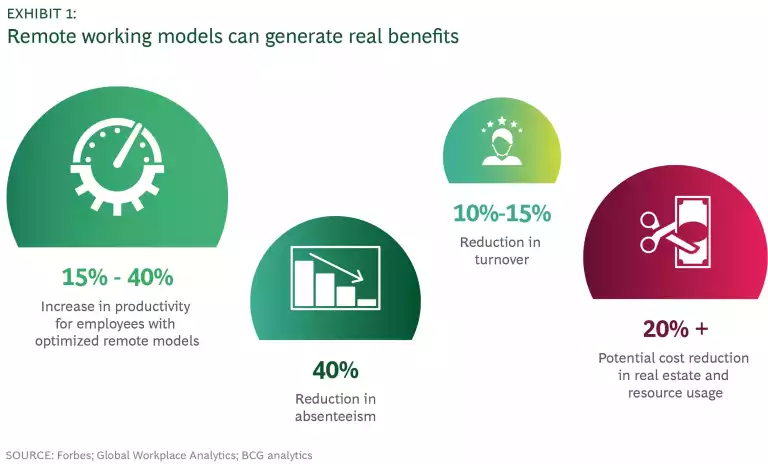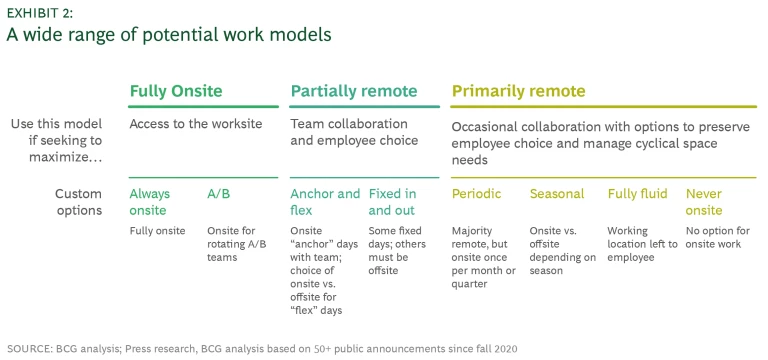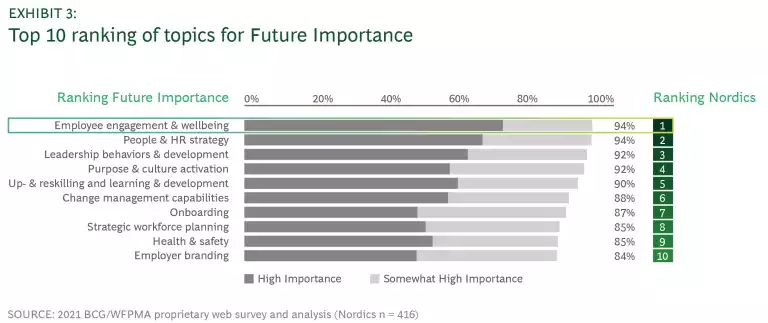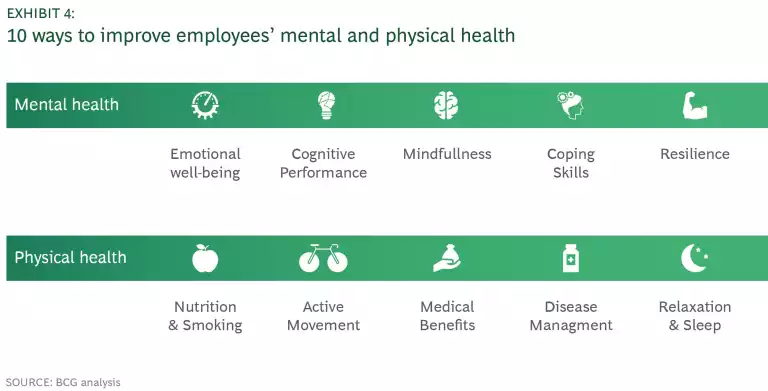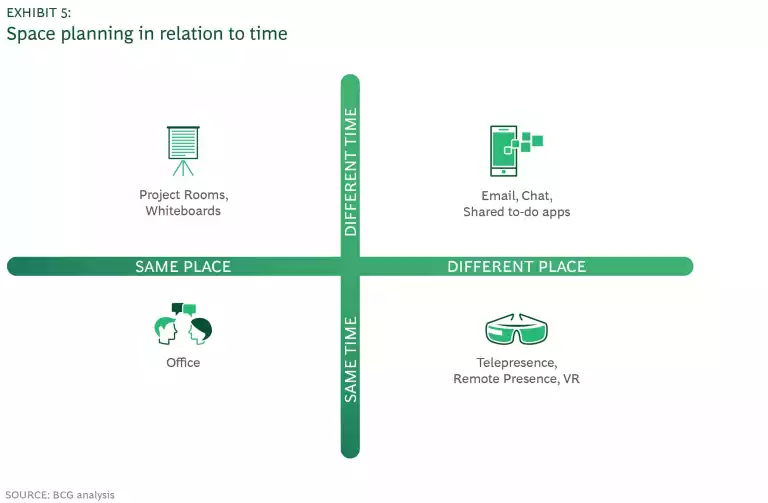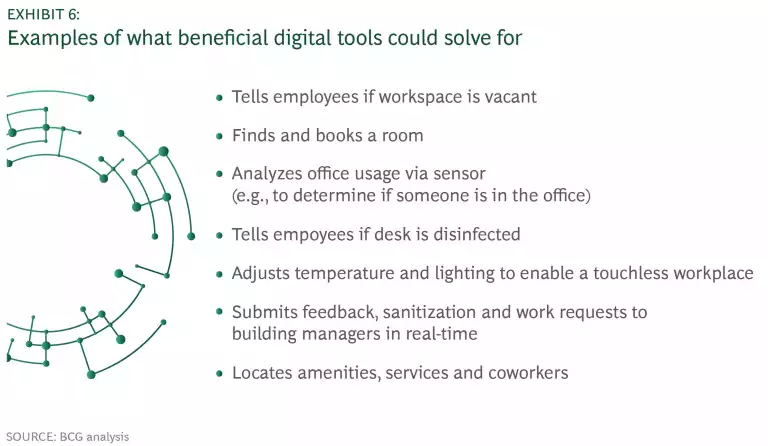In September 2021, Denmark fully lifted COVID-19 restrictions as the first European Union country (following 548 days with varying curbs in place to limit the spread of COVID-19). Employees are returning to their workplaces with hopes and fears for what the future of work will bring.
The window for setting directions on ‘new ways of working’ on the back of COVID-19 is still open. Yet, some leaders leave their employees ’hanging’ with expectations unsaid. They should not.
“Employee engagement and wellbeing” is the single most important future People topic, according to our Creating People Advantage Study 2021 (Nordic results). Companies must re-think their Employee value propositions and ways of working to stay competitive in a dynamic labour market (e.g. gig economy, growth of big tech & start-ups).
We have compiled a simple overview of the most basic future of work considerations. Test yourself to see whether your company still have catching up to do.
5 Ways to Shape the Future of Work
1. Decide on a work model: Decide on a work model by assessing remote readiness and nature of work
2. Drive affiliation: Build intentional mechanisms to drive affiliation and mentorship in mixed work models
3. Prioritize employee wellbeing: Prioritize and scale employee wellbeing programs to boost engagement and limit burn-out
4. Maximize employee time & space: Optimize new work models by helping employees plan their activities in regard to time and space
5. Accelerate digital transformation: Select the right digital tools, balancing features with people’s limited cognitive processing power
1. Decide on a Work Model
Companies across the world are currently experimenting with a wide range of work models. Hybrid models offer the potential of time-saving and increased flexibility but also pose challenges to employees like increased stress, blurred work-life balance and daily routine disruption. Companies must therefore assess the readiness and strategic relevance of shifting to hybrid models. One size does not fit all though and the spectrum is wide, from fully remote to fully on-site.
Organizations should consider the extent to which activities are relatively more independent or more collaborative, complex or routinized, to determine their remote readiness. Relatively independent and routinized activities (as opposed to relatively collaborative and creative ones) tend to be more remote-ready. This should be contextualized in the understanding that the nature of work for many functions was already shifting pre-pandemic and will evolve further (becoming more digitized, automated or AI-enabled ), increasing the proportion of work that is remote-ready. The good hybrid work model must also strike a balance between top-down guidance and bottom-up autonomy, particularly in Denmark where the autonomy is generally high.
Furthermore, companies must understand who they are competing against for talent – and test whether their chosen model makes sense for their employees.
2. Drive Affiliation
Foster affiliation by sharpening the organization’s purpose and culture to inspire employees is crucial in a remote or hybrid workplace with less physical proximity. As the decisive shapers of the organization’s culture, top management and frontline leaders must build intentional mechanisms to drive affiliation in remote or hybrid workplace.
Here is an example of what a leading fast-food chain did. The company successfully adopted remote performance management via 5 key levers to reinforce a development-focused performance management culture while strengthening affiliation:
- Feedback frequency: Transitioned from monthly check-ins to weekly
- Focused coaching support: Enabled managers to develop employees remotely via additional training
- Holistic input: Encouraged staff to solicit live feedback from people other than manager
- Upskilling: Curated library of online courses to facilitate continuous learning
- Employee ownership: Introduced ability to create customized learning journeys based on self-assessments via digital tools
Facilitating connectivity and sustainability for the benefit of strengthened affiliation in a remote setting is crucial
3. Prioritize Employee Wellbeing
Healthy employees mean a healthy organization. COVID-19 has accelerated the trend of increased focus on employee wellbeing in the Nordic, with it ranking as the most important future topic in the Creating People Advantage Study 2021.
We see 10 ways employers can boost employee health.
Our findings from surveying 12,000 professionals employed before and during COVID-19 in the US, Germany, and India provide compelling evidence of mental and physical health as drivers of productivity. While awareness of the impact of mental health on work productivity has been increasing, the pandemic - and the stresses and anxieties it has created - underscores how critical it is for employers to recognize the links between mental health and productivity. For a long time, physical health has been recognized as a driver of productivity, reducing absenteeism and creating a more focused, higher-performing workforce. Our findings provide further evidence of this, highlighting the importance of incorporating time for sleep, exercise, and nutrition into the new work routines.
Here is an example of what a leading service provider in Denmark did. The company invested in employee mental and physical health by teaming up with a health provider – offering training and tracking devices to help employees improve control of life. The device and program tracked physiological data related to Recovery (readiness to perform), Strain (internal load from external stress), and Sleep (quality, duration, consistency). These three key metrics were then used to call out areas for improvement and reinforce positive habits.
4. Maximize Employee Time & Space
Space and time: The crucial dimensions of the future-work universe. To optimize new work models, companies should help employees plan their activities with regard to their time and space dimensions. It may seem mundane, but even a simple chart can help facilitate discussions among team members to optimize use of their time in the office versus home-office.
Time spent together can be orchestrated at the same place, or with remote tools, depending on the nature of the task. On the other hand, time spent alone can be made more efficient with tools that help information-sharing over time as well as space.
72% of global leaders expect a reduction in real estate (BCG facilitated 5 C-Suite roundtables, conducted 30 client discussions, and collected survey responses from top clients on the topics of ‘Return to workplace’ and ‘Future workforce’). Danish offices are unlikely to disappear, but they will compete with other places for hosting individual and group work. As a result of this competition, offices must change and serve the needs of those using them.
5. Accelerate Digital Transformation
Minimize to maximize. Digital tools in relation to workspace have enabled effective virtual connection during the pandemic. Be it video chats, or specialized collaboration tools - without digitalization, thinking about the future of work would not be possible. Some use cases are really basic but helps employees navigate at ease (e.g. instantly pointing out vacant ‘quiet space’ or ‘meeting space’ versus traditional room booking tools.
However, people have limited cognitive processing powers. Does the fourth collaboration software help or does it just confuse us? Are all connection channels needed or would half of them suffice? The right balance is essential when shaping the future of work.
Looking Ahead; A New Point of Departure for Future of Work – by No Means a Destination
COVID-19 accelerated our transition to new ways of working. All companies should have taken a stance by now on the five basic building blocks.
Looking ahead, we see an even more dynamic future work ‘place’ with shifting priorities on the People agenda. More so than ever before, companies must put employees at the center and set new paradigms for up- and re-skilling. Read more in our
Creating People Advantage Survey
.

